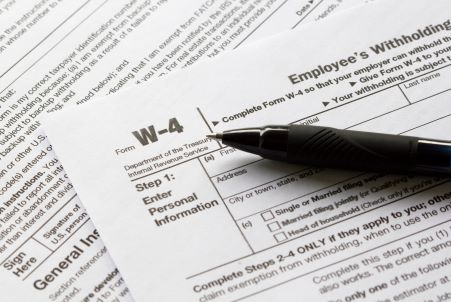
What Is Tax Withholding and Why Should I Care?
04/23/23
Although it may seem counterintuitive, you shouldn’t be hoping for a large tax return in April. Why? It means you’ve been giving up too much of your paycheck throughout the year instead of putting it in your pocket.
In 2022, the average federal tax refund was around $3,039*. Most of us wouldn’t turn down a few thousand extra dollars all at once, but that amount could also be spread out throughout the year – more than $200 each month, assuming the average refund.
That’s money you could be using to pay bills or enjoy life a little more. You’re also missing out on the chance to grow those funds by saving or investing.
And don’t forget the flip side – you could be paying too little in federal and state withholding. That means that instead of a refund, you could be looking at paying a big tax bill since you didn’t contribute throughout the year.
You’ll never know until you do your homework. If you haven’t taken a look at your tax withholding in a few years, it might be time to adjust your amount and put your mind at ease.
What is tax withholding?
When you get paid, in most cases, your employer holds back income tax (both state and federal) from your paycheck and pays it to the IRS and your state treasurer for you. That’s your tax withholding.
If you’re having too much money withheld from your paychecks, you’ll find out when you do your taxes, and the IRS or your state treasurer will give you back that overpayment (your refund). If you haven’t paid enough, you’ll owe the government the amount you underpaid all at once.
When should I change my tax withholding amounts?
According to the IRS, there are three times to take a look at your withholding and consider making changes.
Early each year. You’ll ensure you are paying the right amount of tax to ensure you don’t get a large refund or bill.
When tax laws change. When you hear about a tax change in the media or from your tax preparer or accountant that could affect you, it might be time to lower or raise your withholding amount.
When you have a big life change. You might be surprised just how many life events can change your tax burden and require a change in your tax withholding.
Events and situations that can change your tax withholding
Lifestyle changes like marriage, divorce, the birth or adoption of a child, buying a home, retirement, and filing bankruptcy.
Income changes such as when you or your spouse start a new job, leave a job, retire or quit working, or start or stop a second job.
Getting taxable income not subject to withholding like interest income, dividends, capital gains, self-employment income, or IRA distributions.
Adjustments to your income like an IRA deduction, student loan interest deductions, or alimony payments.
Itemized deductions or tax credits like medical expenses, taxes, interest expenses, charitable giving, expenses related to dependent care, educational credits, child tax credits, and your earned income credit.
How do I change my tax withholding?
Changing your tax withholding amount is easy. Just ask your company’s HR department for IRS Form W-4, Employees Withholding Allowing Certificate or download it from the IRS website on your own.
If you need help deciding how much to withhold, the IRS has a Tax Withholding Calculator to get you started.
Why should I care about my tax withholding amount?
By ensuring that you have the appropriate amount withheld from your paychecks, you’ll maximize the amount of money in your pocket throughout the year. Rather than getting one lump sum at tax time, you’ll have more money each week and month to spend or save as you like. And of course, you’ll save yourself the shock of owing money to the IRS or your state in April.
While calculating and adjusting your tax withholding might not be at the top of your to-do list, you’ll be glad you did it when you have some extra money each month. Once you’ve settled on the right amount and see a bigger paycheck each week, turn to the professionals at Sunflower Bank or First National 1870 to help you save, invest and plan for your money.
* Source: The Motley Fool Ascent, March 9, 2023
